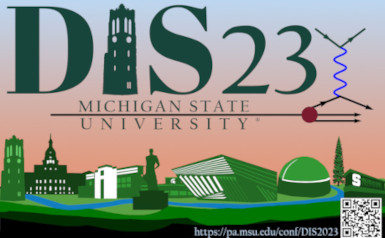Speaker
Description
One of the most important unresolved puzzles of the proton is the “proton spin puzzle”. Originally, the proton spin was assumed to be produced only by the valence quark spins, with no contribution from sea quarks or from gluons, and no contribution from orbital angular momentum. However, the contribution of the spins of both quarks and antiquarks to the proton spin have been measured over the past decades and is only about 30%. Many additional contributions have been considered to solve this puzzle. One of them is the contribution of the orbital angular momenta (OAM) of quarks and antiquarks.
The Sivers function, which represents the correlation between the transverse momentum of a quark and the spin of the parent hadron, can give some hints about the OAM contribution. The Sivers function of valence quarks has been measured by several experiments mainly using SIDIS. On the other hand, the Sivers function of antiquarks has not been determined precisely because SIDIS is not sensitive to them. The Drell-Yan process gives a window into the transverse momenta of the quark-antiquark pair, and thus a view of the antiquarks Sivers function. Another importance of the Sivers function measurement by the Drell--Yan process is that it can be utilized for investigating the sign change of the Sivers function by Drell--Yan and SIDIS.
The SpinQuest experiment will observe the transverse single spin asymmetry in the Drell-Yan production of muon pairs with the aim of extracting the Sivers functions of the light sea quarks in the proton, using polarized fixed-targets of NH$_3$ and ND$_3$ and the 120 GeV unpolarized proton beam from the Fermilab Main Injector. In this talk, the progress of the SpinQuest experiment will be presented.
| Submitted on behalf of a Collaboration? | Yes |
|---|




